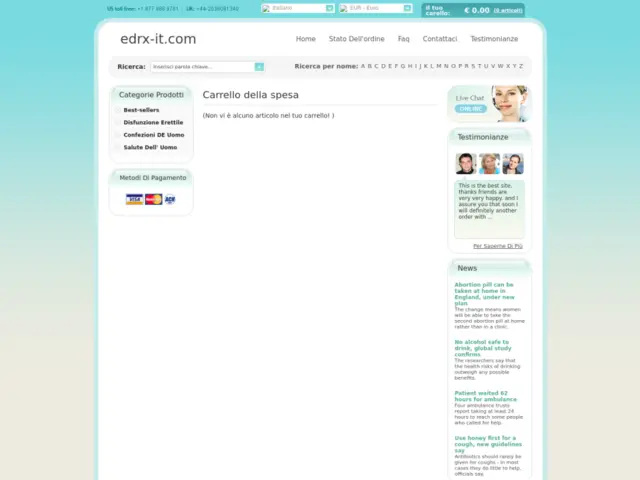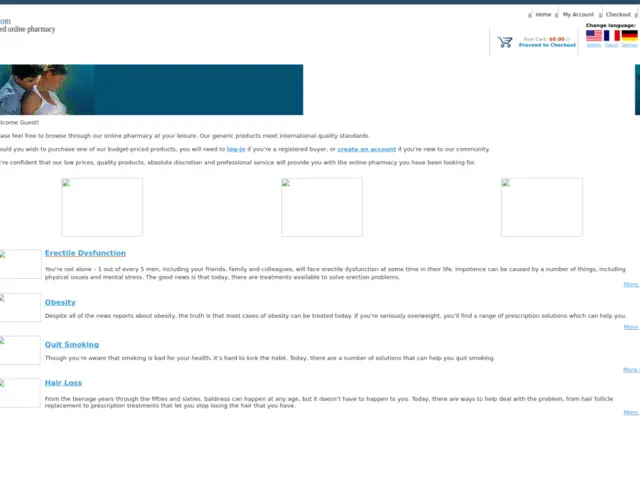Living with inflammatory bowel disease (IBD) means juggling symptoms, doctor visits, and a shelf of medicines. When it comes to choosing a drug, you want to know exactly how each option works, what side‑effects to expect, and whether the price fits your budget. This guide breaks down Azulfidine - the brand name for sulfasalazine - and lines it up against the most frequently prescribed alternatives. By the end you’ll know which pill or infusion fits your lifestyle and disease stage best.
What is Azulfidine (Sulfasalazine)?
Azulfidine is a combination of sulfapyridine (an antibacterial) and 5‑aminosalicylic acid (5‑ASA, an anti‑inflammatory). Originally developed for ulcerative colitis, it’s also approved for Crohn’s disease and rheumatoid arthritis. The drug is taken orally and is activated by colonic bacteria, which split the molecule so the 5‑ASA can target the inflamed lining of the gut.
Key attributes:
- Typical starting dose: 500 mg once daily, titrated up to 2-4 g per day.
- Onset of symptom relief: 2-4 weeks for mild‑to‑moderate disease.
- Common side‑effects: nausea, headache, photosensitivity, reversible oligospermia.
- Cost in Australia (2025): ≈ AU$30-45 per month for a 500 mg tablet.
Why patients and clinicians still pick Azulfidine
Even after newer biologics entered the market, Azulfidine holds a solid place for several reasons. First, it’s an oral tablet, avoiding the needles or infusion chairs that biologics require. Second, its price is a fraction of biologic therapies, making it attractive for patients on limited insurance coverage. Third, for some people the drug’s dual mechanism - antibacterial plus anti‑inflammatory - helps when gut flora play a role in flare‑ups.
However, the downside is its side‑effect profile, especially the sulfa component, which can trigger rash or liver enzyme elevations. Because of the split‑release mechanism, the drug can also cause a “sulfa‑type” hypersensitivity in people allergic to sulfonamides.
Major alternative classes for IBD
When Azulfidine isn’t a fit, doctors turn to four main families of medication:
- 5‑ASA agents - pure mesalamine formulations (e.g., Asacol, Rowasa).
- Corticosteroids - short‑term control (e.g., Budesonide, prednisolone).
- Immunomodulators - older oral agents (e.g., Methotrexate, azathioprine).
- Biologic therapies - injectable or infused antibodies (e.g., Infliximab, Adalimumab).
Below, each alternative is introduced with a short microdata definition, then we’ll stack them side‑by‑side in a comparison table.
Alternative #1: Mesalamine (5‑ASA)
Mesalamine is a pure 5‑aminosalicylic acid that delivers the anti‑inflammatory directly to the colon without the sulfapyridine component. It comes in delayed‑release tablets, suppositories, and enemas, providing flexibility for disease location.
Typical dose: 2 g-4 g per day split into two doses. Onset: 1-2 weeks. Side‑effects: mild nausea, headache, rare kidney issues. Cost (2025): AU$60-80 per month.
Alternative #2: Budesonide (Corticosteroid)
Budesonide is a locally acting corticosteroid designed to release in the terminal ileum and colon. Because of its high first‑pass metabolism, systemic exposure is lower than prednisolone.
Typical dose: 9 mg daily for up to 8 weeks. Onset: days to a week. Side‑effects: oral thrush, mild adrenal suppression, candidiasis. Cost (2025): AU$45-70 per month.
Alternative #3: Methotrexate (Immunomodulator)
Methotrexate is a folate antagonist that reduces immune cell proliferation. Though originally a cancer drug, low‑dose weekly regimens are effective for Crohn’s disease refractory to 5‑ASA.
Typical dose: 15-25 mg once weekly (subcutaneous). Onset: 8-12 weeks. Side‑effects: liver enzyme rise, nausea, mouth sores, rare pulmonary toxicity. Cost (2025): AU$25-35 per month (generic).
Alternative #4: Infliximab (Biologic)
Infliximab is a chimeric monoclonal antibody that blocks tumor necrosis factor‑alpha (TNF‑α), a key driver of inflammation in both Crohn’s disease and ulcerative colitis.
Typical regimen: 5 mg/kg IV at weeks 0, 2, 6, then every 8 weeks. Onset: 2-6 weeks. Side‑effects: infusion reactions, infections, rare demyelinating disease. Cost (2025): AU$1,200-1,500 per infusion.
Alternative #5: Adalimumab (Biologic)
Adalimumab is a fully human anti‑TNF‑α antibody administered subcutaneously, offering more convenient at‑home dosing.
Typical dose: 160 mg loading, then 80 mg week 2, then 40 mg every other week. Onset: 3-8 weeks. Side‑effects: injection site pain, infections, rare reactivation of hepatitis B. Cost (2025): AU$850-1,050 per month.
Side‑by‑Side Comparison Table
| Drug | Class | Mechanism | Typical Dose | Onset of Relief | Common Side‑effects | Approx. Cost (AU$/mo) |
|---|---|---|---|---|---|---|
| Azulfidine (Sulfasalazine) | 5‑ASA + sulfonamide | Colonic bacteria split into sulfapyridine + 5‑ASA | 500 mg - 4 g daily | 2-4 weeks | Nausea, headache, photosensitivity | 30-45 |
| Mesalamine | 5‑ASA | Direct 5‑ASA release in colon | 2-4 g daily | 1-2 weeks | Kidney changes, mild nausea | 60-80 |
| Budesonide | Corticosteroid | Local glucocorticoid receptor activation | 9 mg daily (≤8 wks) | Days‑1 week | Thrush, adrenal suppression | 45-70 |
| Methotrexate | Immunomodulator | Folate antagonism → ↓ immune proliferation | 15-25 mg weekly (SC) | 8-12 weeks | Liver enzymes, nausea, mouth ulcers | 25-35 |
| Infliximab | Biologic (anti‑TNF) | Bind TNF‑α, block signaling | 5 mg/kg IV q8 wks | 2-6 weeks | Infusion reactions, infections | 1,200-1,500 |
| Adalimumab | Biologic (anti‑TNF) | Bind TNF‑α, block signaling | 40 mg SC q2 wks | 3-8 weeks | Injection site pain, infections | 850-1,050 |
How to choose the right option for you
Picking a medication isn’t just about the table numbers. Consider these decision factors:
- Disease severity - Mild to moderate ulcerative colitis often responds to 5‑ASA drugs. Moderate‑to‑severe Crohn’s may need immunomodulators or biologics.
- Location of inflammation - If disease is limited to the colon, oral 5‑ASA works well. Ileal disease benefits from budesonide or biologics that penetrate deeper.
- Allergy profile - Sulfa‑allergic patients should avoid Azulfidine and other sulfonamides.
- Pregnancy plans - Mesalamine and infliximab have more safety data in pregnancy than sulfasalazine or methotrexate.
- Cost & insurance - Oral generics (Azulfidine, methotrexate) are budget‑friendly. Biologics may require prior‑auth but can be partially covered under the PBS.
- Convenience - Daily pills vs. bi‑weekly injections vs. monthly infusions - choose what fits your lifestyle.
Talk with your gastroenterologist about these criteria. Often the best plan starts with an oral 5‑ASA, adds a short course of budesonide for flares, and escalates to a biologic only if symptoms persist.
Switching from Azulfidine to another therapy
If you experience intolerable side‑effects or your disease progresses, here’s a practical switch roadmap:
- Gradual taper - Reduce the sulfasalazine dose over 1-2 weeks to avoid rebound inflammation.
- Start the new agent - For a 5‑ASA switch, begin mesalamine at a full dose once the taper is complete. For a steroid bridge, add budesonide while tapering.
- Monitor labs - Check CBC, liver enzymes, and renal function 2 weeks after the change.
- Assess response - Track stool frequency, blood in stool, and abdominal pain using a simple diary for 4 weeks.
- Adjust as needed - If no improvement, discuss escalation to methotrexate or a biologic with your doctor.
Never stop a medication abruptly without a plan; sudden withdrawal can trigger a flare.
Frequently Asked Questions
Can I take Azulfidine if I’m allergic to sulfa drugs?
No. Azulfidine contains a sulfonamide component, so anyone with a sulfa allergy should avoid it and opt for a pure 5‑ASA like mesalamine.
Is Azulfidine safe during pregnancy?
Sulfasalazine crosses the placenta and may cause reversible infertility in male fetuses. Most specialists prefer mesalamine or biologics for pregnant patients.
How long does it take to see results with Azulfidine?
Patients typically notice symptom improvement after 2-4 weeks, but full mucosal healing can take several months.
What are the biggest drawbacks of biologic therapies?
High cost, need for regular infusions or injections, and increased infection risk are the main concerns.
Can I combine Azulfidine with a probiotic?
Yes, many patients add probiotics to support gut flora, but discuss any supplement with your doctor to avoid interactions.
Next steps
Take the comparison table, match it against your own disease profile, and schedule a discussion with your gastroenterologist. Bring notes on side‑effects you’ve experienced, your budget, and any pregnancy or allergy concerns. With the right data, you and your doctor can pin down the therapy that keeps you symptom‑free without breaking the bank.





Grace Baxter - 21 October 2025
When the discourse surrounding IBD treatments is reduced to a simplistic cost versus efficacy chart, one must question the very premise of such reductionism, especially given the nuanced interplay of pharmacodynamics, patient genetics, and sociopolitical healthcare frameworks.
It is not merely a matter of choosing a pill based on its price tag, but an intricate dance that involves the patient’s cultural identity, national healthcare policies, and even the ideological underpinnings of pharmaceutical lobbying.
Consider, for instance, how the governmental subsidies in our beloved nation often prioritize drugs that align with domestic manufacturing interests, subtly nudging physicians towards certain brands while marginalizing others that might be clinically superior but lack patriotic branding.
This nationalist tilt, while cloaked in the language of public health, can inadvertently compromise individualized care.
Furthermore, the sulfa component in Azulfidine, dismissed by many as a trivial side‑effect concern, actually raises profound questions about how we balance antimicrobial stewardship with anti‑inflammatory needs.
The gut microbiome, a frontier of modern medicine, may react adversely to sulfapyridine, thereby altering the very disease trajectory we aim to mitigate.
In contrast, pure mesalamine formulations, albeit more expensive, avoid this antimicrobial disruption, presenting a case where higher upfront costs might yield downstream savings in microbiome‑related complications.
From an economic standpoint, the cost‑effectiveness analysis must incorporate not only drug acquisition costs but also the hidden expenses of managing side‑effects, hospitalizations, and lost productivity.
Moreover, the geopolitical context cannot be ignored; domestic production of sulfasalazine grants a veneer of self‑sufficiency, yet reliance on imported biologics can create supply chain vulnerabilities during international crises.
This paradox underscores the necessity for a diversified therapeutic arsenal that does not hinge on a single class of drugs.
Patients who are allergic to sulfa compounds, a demographic often overlooked in clinical trials, are forced into alternatives that may be less effective for their specific disease phenotype.
In the grand scheme, the decision matrix for IBD therapy should be reframed to prioritize patient autonomy, microbiome integrity, and long‑term societal resilience over short‑term fiscal snapshots.
Thus, any comparison that neglects these multilayered considerations does a disservice not only to individual patients but also to the broader national health narrative.
Rob Flores - 1 November 2025
It's fascinating how the author manages to turn a straightforward drug comparison into an academic lecture, complete with arguably overblown concerns about microbiomes and geopolitics.
Shiv Kumar - 11 November 2025
From a pharmacological perspective, the delineation between sulfasalazine's bifunctional mechanism and the monotherapy of mesalamine warrants deeper analysis, particularly regarding the differential activation by colonic flora.
Ryan Spanier - 22 November 2025
We all know how overwhelming treatment choices can be; let’s remember to keep the focus on what feels manageable for each individual, whether that’s a once‑daily tablet or a scheduled infusion.
Abhinav Moudgil - 2 December 2025
Hey folks, think of each option as a tool in a toolbox-pick the one that fits the current job, and don’t be afraid to swap it out when the project changes!
Bradley Allan - 12 December 2025
Look, if you’re still debating whether to take a cheap sulfa pill or spend a small fortune on a biologic, you’re basically choosing between a lukewarm cup of tea and a gourmet espresso-both will wake you up, but one does it with style.